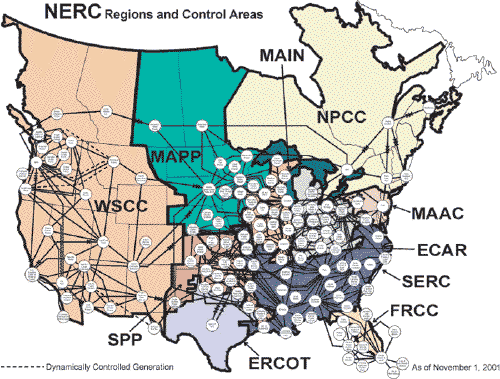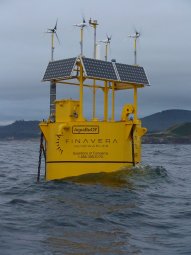Blog Archives
Ormat 3rd Quarter Results
Last week Ormat announced a solid quarter with revenues $79.5M, up 2% Y/Y and earnings of $15.8M up 13% Y/Y. Details of the earnings announcement are available in this press release. Dita Bronicki reaffirmed guidance for the year and the quarter and the stock has responded well in the market place. For the year, Ormat is on track to deliver $280M in revenue and around $55M in earnings for 2007.
The equipment business continued to be “lumpy” showing a decrease of 15.8% Y/Y – while the recovered heat product wins seem to be coming in, increased competition in the geothermal heat conversion business could be starting to have an impact. Also, a number of developers we have contact with are not inclined to select Ormat equipment for their projects due to the competitive relationship (some have used the word “predatory”) Ormat has fostered with developers. This bears watching closely, though the electricity segment continues its growth generally as predicted.
A secondary offering of 3.3M shares raised $155M in this quarter, though it is not reflected in the results. This money will be used to further advance the development of new power plants. Also, it is rumored, though not reported that the company may have realized positive results from one of its drilling and exploration programs in Nevada.
At current market cap, $1.89B, Ormat is trading just north of 34 times 2007 earnings.
Needed: Smart Grid

Sorry to do this two days in a row, but Renewable Energy Access is on a roll. Today’s great content revolves around rebuilding the electrical grid.
1 commentCreating a 21st Century Grid
by Stephen Lacey, Staff WriterIn 1957, as Eisenhower began his second term as U.S. President, the first satellite launched into orbit and the first commercial nuclear reactor came online, electrical workers all over the country were installing the world’s most advanced transmission and distribution (T&D) system. Today, much of that T&D system installed 50 years ago remains in place, holding together a patchwork grid for ever-expanding electricity markets.
“You have to think much more distributed than centralized, you have to solve the problem of storing energy, and it has to be much more like an internet system than the current grid is today in order to be effective.”
Dr. Wade Adams, Director, Richard E. Smalley Institute for Nanoscale Science and Technology
Now in 2007 – the age of the internet, personal digital media and distributed energy — the grid has failed to keep pace with the rapidly changing technological landscape. While most industries rely on technologies that have been invented or updated in the last few years, the electricity delivery industry uses technologies that have more or less stayed the same for 100 years.
There’s a common idiom that goes, “if it ain’t broke don’t fix it.†While the grid in the U.S. is hardly broken, it is beginning to deteriorate rapidly in some places, and it will need some serious repairs in order to meet the growing demand for electricity in general and distributed renewable electricity specifically.
“We need to see a very substantial transformation of the system,†says David Meyer, Senior Policy Advisor in the Office of Electricity Delivery and Energy Reliability at the U.S. Department of Energy (DOE). “We’re outgrowing it in many parts of the nation. It’s certainly not the high-capacity, integrated and smart system that we need.â€
The current grid is a stiff arrangement of one-way transmission lines, centralized generation facilities and aging substations. The recent emergence of large amounts of renewable electricity in markets around the country are creating new challenges for both the transmission and distribution sectors.
AquaBuoy Sinks
3 commentsJust hours before its scheduled removal, AquaBuOY 2.0 has sunk.
“For the purpose of the project, it was highly successful.” Kevin Bannister, VP for Business Development, Finavera Renewables
Finavera Renewable’s 72-foot high wave energy test buoy went down in about 115 feet of water on Oct. 27, just one day before it was to be removed from its location in the waters off of Lincoln County, a part of the Central Oregon Coast. The device had been deployed on September 6.
While company officials say they don’t know exactly why it sunk, Finavera Renewable’s spokesman Mike Clark said, “It seems to have something to do with the float section of the device.” He said the buoy began taking on water and the bilge pump “couldn’t keep up with the amount of water it was taking on.” The pump failed and the device went down. “We’re pretty sure it didn’t have anything to do with the power-generating technology,” Clark said.
13.2 MW for Raft River
During testing late last month, the Raft River Unit One facility produced a maximum of 13.2MW of power. Based on data collected from the test run, the plant equipment is being tuned and repaired (due to debris flow through the turbine) to enable the company to enter production late this calendar year. The full press release from US Geothermal is available at their website.
Comments are off for this post
Great Video of Tesla Car in Action
$98,000 for a car is steep, but this video does show a great experience. As the Tesla employee says, technology tends to enter the market on the high-end and then commoditize over time. The electric car may finally be here. Comments are off for this post









